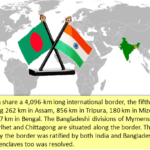Veto Power of Indian President: Basics Explained

Upon introduction in Parliament, a bill undergoes the process of potential enactment. Before transitioning into law, it must receive approval from the Indian President. The President holds the authority to either reject, return, or withhold assent to the bill. This Power, known as the President’s veto power, is outlined in Article 111 of the Indian Constitution.
VETO POWERS
- Absolute Veto: It refers to the power of the President to withhold his assent to a bill passed by the Parliament. The bill then ends and does not become an act.
- Suspensive Veto: The President uses a suspensive veto when he returns the bill to the Indian Parliament for its reconsideration. suspensive veto can be over-ridden by the re-passage of the bill by the Indian Parliament . If the Parliament resend the bill with or without amendment to the Indian President, he has to approve the bill without using any of his veto powers.
- Pocket Veto: The bill is kept pending by the President for an indefinite period when he exercises his pocket veto. He neither rejects the bill nor returns the bill for reconsideration. Constitution does not give any time-limit to President within which he has to act upon the bill.
The president of India has absolute veto over state bills when it is reserved for him by the governor of a state.
According to Article 200, when a Bill, passed by the Legislature of a State, is presented to the Governor, he has four options
- He assents to the Bill
- He withholds assent
He reserves the Bill for the consideration of the President






0 Comments